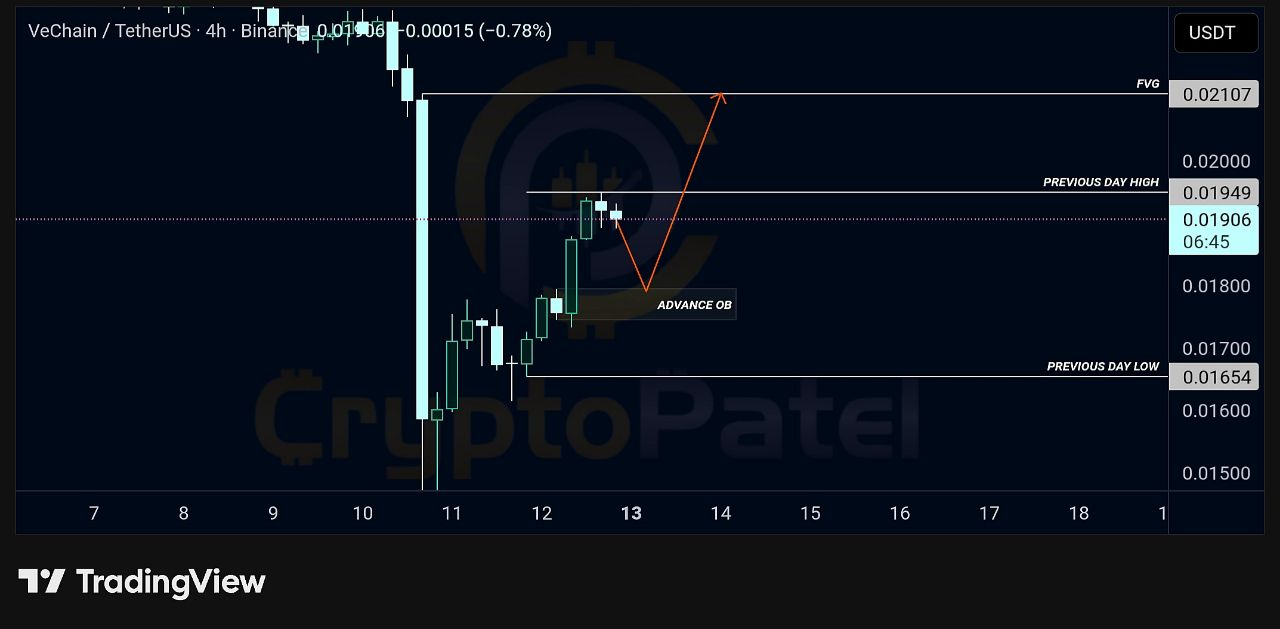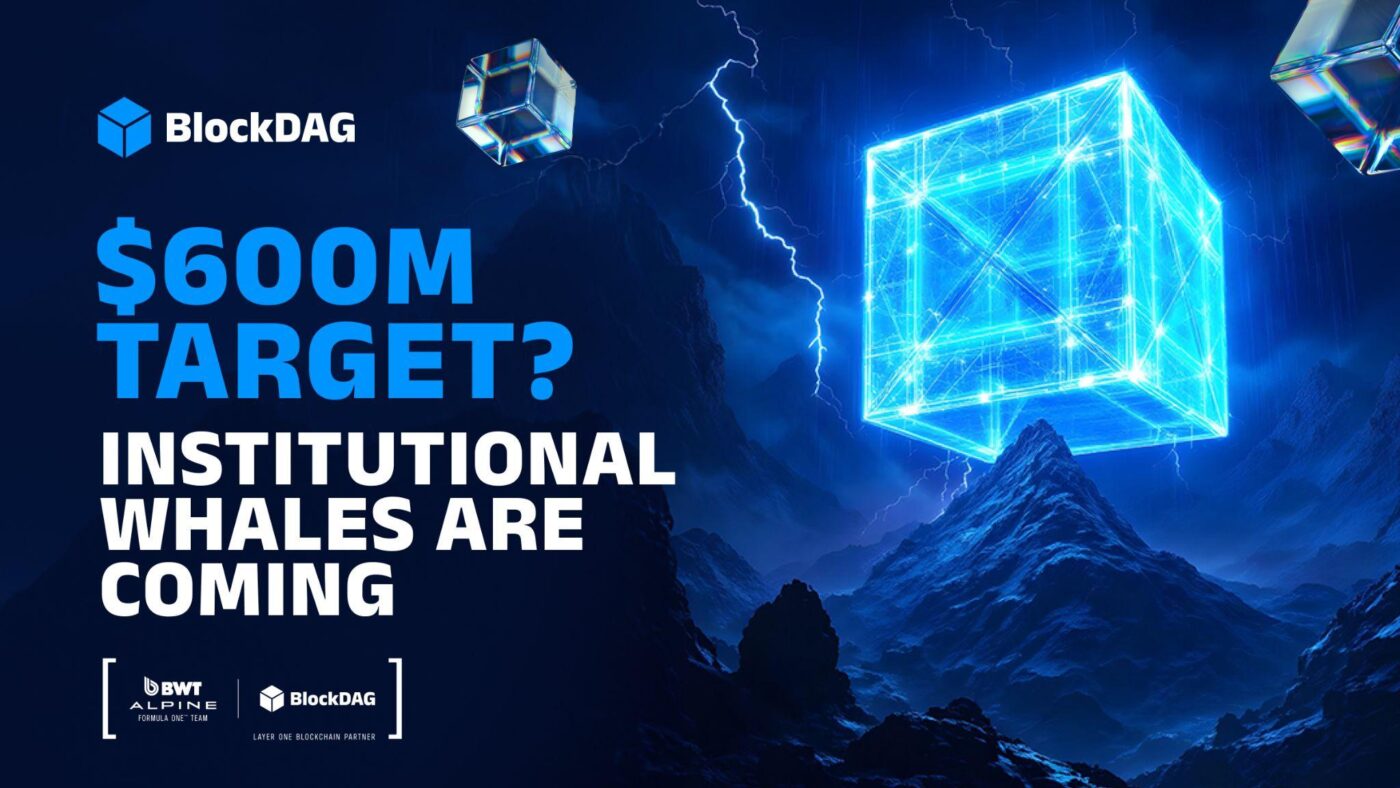VeChain’s Resistance Test, Ethena’s DeFi Hype, and BlockDAG’s Mainnet Progress: The Race for the Best Crypto to Buy Now
VeChain (VET) has climbed close to the $0.021 mark, drawing attention as trading volume builds and a potential breakout looms. Ethena (ENA), meanwhile, gained nearly 8% in just a few sessions, supported by rising DeFi sentiment and renewed activity in derivatives. While both show price-driven surges, their momentum depends heavily on short-term market cycles.
Then comes BlockDAG (BDAG), a high-ROI outlier that blends DAG architecture, miner integration, and F1® visibility into a compliance-driven roadmap. This article compares all three: from VeChain’s logistics legacy to Ethena’s hype-fueled spike and BlockDAG’s structural buildout, each project brings a different answer to the same buyer question, what really matters next?
VeChain: Enterprise Adoption and Technical Reselience
VeChain’s current market setup reflects renewed attention from enterprise blockchain users exploring real-world supply-chain solutions. The token’s movement toward the $0.021 resistance line highlights its capacity to attract investor interest as trading volumes expand. VeChain’s strength lies in its proven use cases across logistics and verification, where blockchain tracks authenticity and origin of goods.
Analysts at Tron Weekly suggest that if buying volume maintains its pace, a confirmed breakout could follow, placing VeChain among short-term gainers this quarter. However, its challenge remains scalability and consistent enterprise integration, as adoption cycles for corporate blockchain solutions often take longer than speculative investors expect.

Despite these limitations, VeChain’s technical resilience gives it a strong footing in the near term. The next few weeks will reveal whether its push toward resistance becomes a sustained uptrend or a brief reaction to market optimism. Institutional participation will be key, especially as more companies seek blockchain infrastructure that delivers measurable value rather than just hype-driven exposure.
Ethena (ENA): DeFi Momentum and Speculative Gains
Ethena’s 8% jump made it one of the top crypto gainers this week, supported by sentiment-driven activity in the DeFi sector. Traders view ENA as a beneficiary of the renewed appetite for derivative-linked tokens, but its growth remains fragile. Traders Union notes that while Ethena’s model shows potential, its infrastructure offers no clear advantage over established DeFi platforms. Price gains have been rapid but largely speculative, fueled by liquidity shifts rather than platform development or utility growth.
The challenge for Ethena is to translate its current enthusiasm into long-term stability. Without substantial upgrades or partnerships that differentiate it from other yield-based tokens, ENA risks retracing gains once broader DeFi momentum cools.

This volatility limits its appeal to institutional or risk-averse investors, who often prioritize transparent roadmaps and utility expansion over short-term appreciation. For now, Ethena remains a momentum-driven asset rather than a strategic long-term hold.
BlockDAG: Presale Success and Mainnet Readiness
While VeChain and Ethena move with market mood, BlockDAG continues to build toward a full-scale launch grounded in utility and verifiable progress. The project has surpassed $425 million in presale funding, selling nearly 27 billion coins, with its current batch 31 priced at $0.0304 yet offering a final special entry at $0.0015 using code “TGE.” The ROI since its first batch stands at an impressive 2940%, underscoring how early buyers have already captured substantial returns.
BlockDAG’s advancement through its Awakening Testnet introduces a new blockchain layer combining DAG and PoW architecture, replacing outdated UTXO models with full EVM compatibility. This brings a composable, high-throughput structure capable of supporting NFTs, smart contracts, and scalable dApps. Miner integration is already live, offering users direct ecosystem participation rather than passive speculation.
Beyond its technology, BlockDAG emphasizes compliance, with MiCA-aligned documentation nearing submission to EU regulators. Its final tokenomics and treasury audits are scheduled for release before mainnet launch, ensuring transparency before exchange listings. The project’s roadmap outlines the next steps: finalizing the mainnet, delivering all mining units, reaching the $600 million goal, and coordinating listings with five confirmed Tier-1 and Tier-2 exchanges.

More importantly, BlockDAG’s strategy prioritizes sustained growth through staking rewards, post-launch referral systems, and governance-based community participation. These elements position it as a network designed for adoption rather than speculation, aligning more closely with projects that build ecosystems, not just price spikes.
Last Say
When assessing the best crypto to buy now, the difference between short-term breakout and long-term breakthrough becomes clear. VeChain may deliver a technical lift if its enterprise partnerships sustain momentum, while Ethena offers potential for quick returns during DeFi upswings. Yet both rely on market rhythm rather than structured delivery.
BlockDAG, with its $425 million+ presale, nearly 27 billion coins sold, and 2940% ROI growth, stands out as a project defined by development milestones rather than speculation. Its compliance-first approach, growing miner ecosystem, and post-launch governance model make it not just another crypto story but one building the foundation for blockchain’s next operational standard.
Presale: https://purchase.blockdag.network
Website: https://blockdag.network
Telegram: https://t.me/blockDAGnetworkOfficial
Discord: https://discord.gg/Q7BxghMVyu
The post VeChain’s Resistance Test, Ethena’s DeFi Hype, and BlockDAG’s Mainnet Progress: The Race for the Best Crypto to Buy Now appeared first on Blockonomi.
You May Also Like

Ethereum’s ERC-8004 Brings AI-Driven Economic Potential

XRP (XRP) Faces Potential Downturn as Death Cross Pattern Re-emerges

